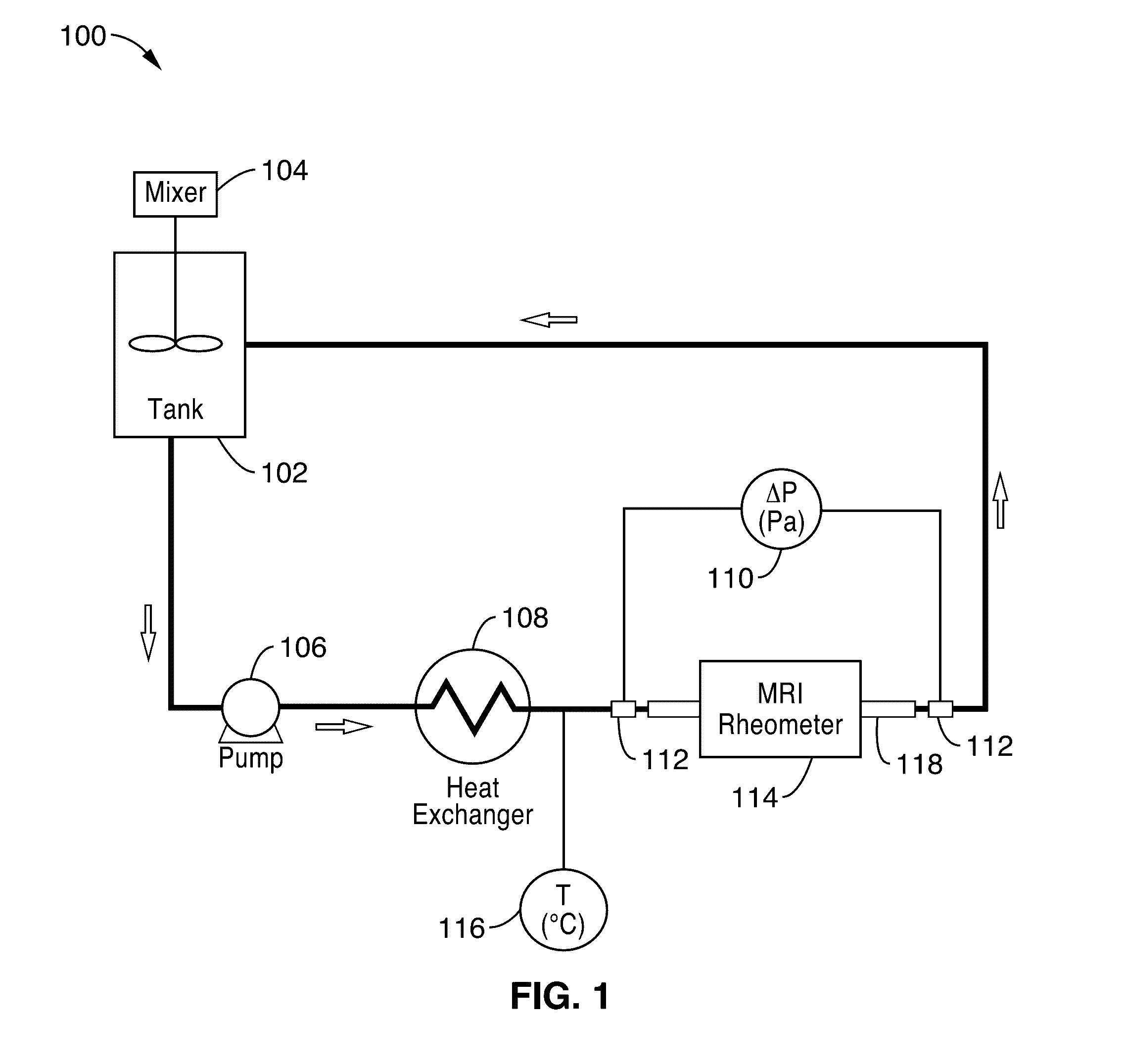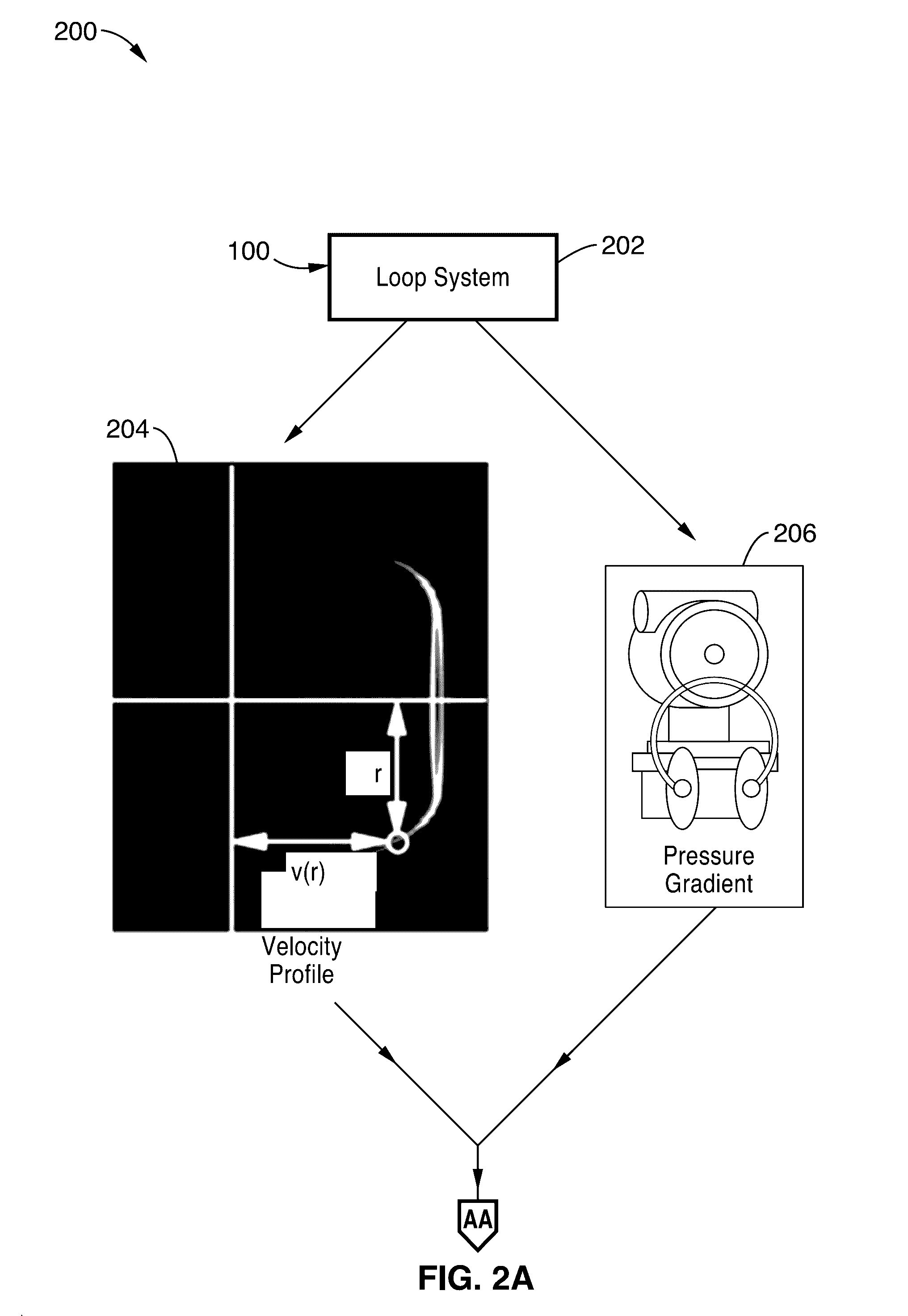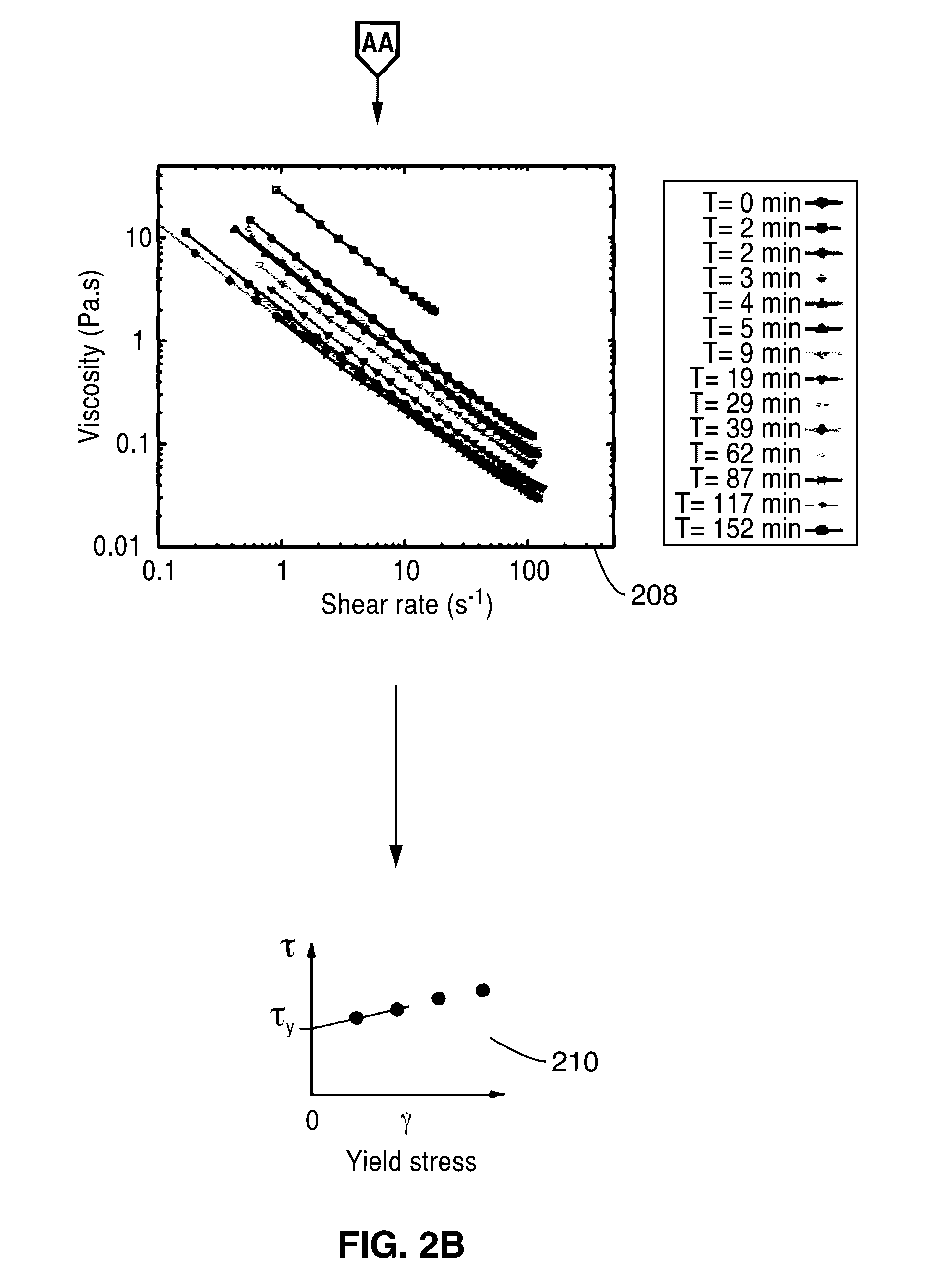Methods for energy-efficient high solids liquefaction of biomass
a biomass and high solids technology, applied in the field of biomass processing, can solve the problems of large energy consumption in the distillation step downstream, affecting the processing cost, and difficulty in mixing, pumping and maintaining appropriate mass and heat transfer, so as to facilitate mixing and heat transfer, the viscosity can be maintained at levels
- Summary
- Abstract
- Description
- Claims
- Application Information
AI Technical Summary
Benefits of technology
Problems solved by technology
Method used
Image
Examples
example 1
[0062]The evolution of yield stress during hydrolysis was examined using four types of biomass: wheat straw, two delignified wood fibers called Solka Floc and sugar beets. The first three are mainly cellulosic. Sugar beets contain substantial amounts of soluble sugars. Table 1 lists the experimental conditions.
[0063]For this example, the method embodiment described in FIG. 5 was carried out on a loop system, such as that described in FIG. 1. Specifically, the substrate biomass was loaded into the tank, along with a buffer and the enzyme. Volumes used range from about 5 kg to about 15 kg. The buffer used was a 50 mM sodium citrate buffer at a pH of 5.0. The volume of buffer used is directly scalable with the total solids and equipment volume (e.g., 6.5 L of buffer were added with about 680 g of biomass and 10% (w / w) solids at the beginning of one experiment. The % solids (w / w) refers to (the weight of biomass / total weight of material in the reactor)*100%.
[0064]There are also further ...
example 2
[0076]In this example, the rheology of 2 types of biomass was examined: a purified form of fibrous cellulose (Solka Floc) and a lignocellulosic substrate (wheat straw). Table 2 shows a summary of the experimental conditions that were used. The method embodiment described in FIG. 5 was also used in this example.
[0077]FIG. 16 shows the change in apparent viscosity and extent of hydrolysis over time for the two types of Solka Floc. The graph illustrates that most of the liquefaction took place in the first 20 minutes. Although these substrates are at very different solids loadings (16% for the short fibers and 8% for the long fibers), the substrates behave very similarly during both liquefaction and saccharification. One possibility for this is that both of the substrates started with similar crowding numbers.
[0078]FIG. 17 shows how liquefaction and saccharification can be decoupled. This graph illustrates the comparison of liquefaction of wheat straw using a commercial enzyme cocktail...
PUM
| Property | Measurement | Unit |
|---|---|---|
| temperature | aaaaa | aaaaa |
| temperature | aaaaa | aaaaa |
| pressure drop | aaaaa | aaaaa |
Abstract
Description
Claims
Application Information
 Login to View More
Login to View More - R&D
- Intellectual Property
- Life Sciences
- Materials
- Tech Scout
- Unparalleled Data Quality
- Higher Quality Content
- 60% Fewer Hallucinations
Browse by: Latest US Patents, China's latest patents, Technical Efficacy Thesaurus, Application Domain, Technology Topic, Popular Technical Reports.
© 2025 PatSnap. All rights reserved.Legal|Privacy policy|Modern Slavery Act Transparency Statement|Sitemap|About US| Contact US: help@patsnap.com



